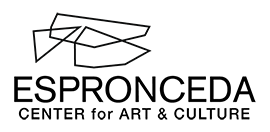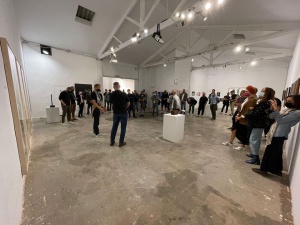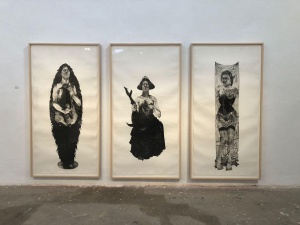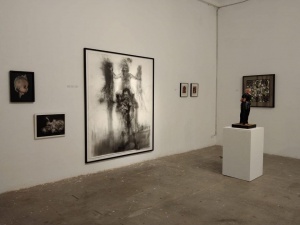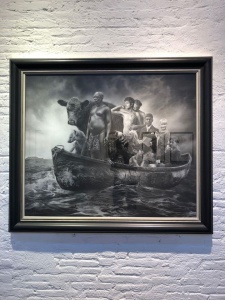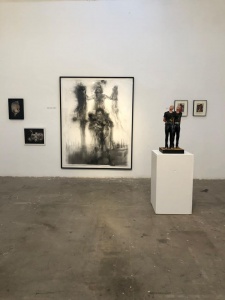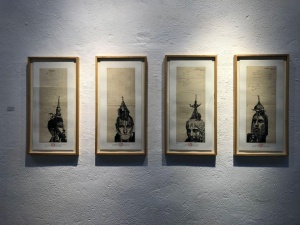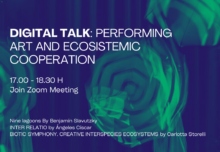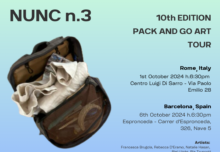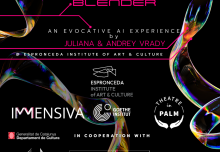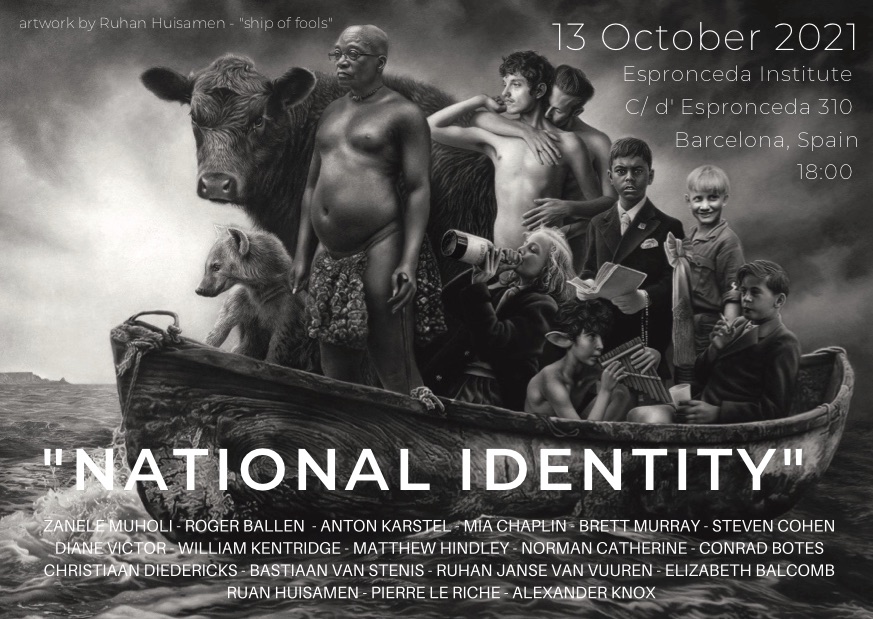
theCOart prides itself on exhibiting “National Identity”, works in a range of media,
seeking to provoke cross-disciplinary debate on South Africa's multicultural
identity. Although practices, processes and personal philosophies may differ, all the
artists have a common goal: to create relevant and technically proficient art.
EXHIBITING ARTISTS:
ZANELE MUHOLI
ROGER BALLEN
ANTON KARSTEL
MIA CHAPLIN
BRETT MURRAY
STEVEN COHEN
DIANE VICTOR
WILLIAM KENTRIDGE
MATTHEW HINDLEY
NORMAN CATHERINE
CONRAD BOTES
CHRISTIAAN DIEDERICKS
BASTIAAN VAN STENIS
RUHAN JANSE VAN VUUREN
ELIZABETH BALCOMB
RUAN HUISAMEN
PIERRE LE RICHE
ALEXANDER KNOX
CURATERS STATEMENT:One of our deepest needs is for a sense of identity, belonging and human
attachment. Identity is the way we perceive and express ourselves. Factors and
conditions that an individual is born with; such as ethnic heritage, sex, or one’s body;
often play a role in defining one’s identity.
However, many aspects of a person’s identity change throughout his, her or
their life. People’s experiences can alter how they see themselves or are
perceived by others. Conversely, their identities also influence the decisions
they make: Individuals choose their friends, adopt certain fashions, and align
themselves with political beliefs based on their identities.
The era of Apartheid in South Africa came to an end with the first free elections in
1994. Since then, visual art has played an instrumental role in the process of societal
change: the quest for a new national identity is vividly reflected in the diversity of
contemporary South African art.
The artists in this exhibition use their work to express, explore, and question ideas
about identity. Therefore, it is not simply what we see, but a way of seeing. We see
it with our eyes but interpret it with our mind and ascribe values to Identity for
intangible spiritual reasons. Identity is important in art for expressing a meaningful
understanding of who we are. If you’ve not been honest with who you are, your work
will not carry the impact that it needs to cause any level of response in your viewers.
OFFICIAL ARTWORK FOR THIS EXHIBITION: Ruhan Huisamen – “Ship of Fools”
ARTIST BIO’S:
Zanele Muholi (b. 1972 Durban, S.A). A photographer and self-proclaimed visual
activist, Zanele Muholi explores Black queer identity in contemporary South Africa.
Muholi first rose to prominence with their series “Faces and Phases,” for which they
shot hundreds of sensitive portraits of women, many from South Africa, and
challenged the country’s accepted rhetoric that homosexuality is un-African. The
Durban-born, Johannesburg-based artist has enjoyed solo exhibitions at Tate
Modern in London, Fotografiska in Stockholm, the Brooklyn Museum, and
the Stedelijk Museum in Amsterdam, among other institutions. Muholi represented
South Africa at the 2013 Venice Biennale and showed as part of the international
exhibition in 2019. Muholi also delved into self-portraiture with their “Somnyama
Ngonyama” (“Hail the Dark Lioness”) series, which explores themes of racism,
sexuality, and the politics of possessing a Black body.
Roger Ballen (b 1950 – USA-SA) Roger Ballen has lived and worked in
Johannesburg, South Africa, for the past three decades. His black and white
photography has shifted from an early focus on
documentary and photojournalism—such as the 1994 series Platteland: Images
From Rural South Africa, which depicted the poor and socially outcast—to staged,
painterly compositions of private, surreal worlds, many without human subjects. In
the 2009 series ”Boarding House, animals, wall drawings, and objects like furniture
and electric wire (a reappearing visual) combine to yield ambiguous and discomfiting
images, recalling artists such as Diane Arbus.
Anton Karstel (b.1968 – Pretoria, S.A.) Karstel is a poignant voice in the South
African fine art landscape. His unique style, and the manner in which he portrays
historical events showcases his profound insight and the mastery of his art. His
works, imbued with subtle colour and purposefully placed marks, move the viewer on
a threefold level – they are aesthetically lingering, emotively resounding and
intellectually stimulating. His style has the effect of a certain ‘hinting towards’ – the
multiple layers of his works (whether they be his paintings, installations or
photography) invite the viewer to immerse themselves in what it is that they are
seeing. As a result, the viewer challenges their understanding of what it is that they
are seeing. Small details evoke desire, respect and interest – his works are objects
of beauty and are truly awe-inspiring. But the movement of the works is captured in
the vibration of the subject matter. Karstel reminds us that everything that we see or
seem is underpinned by history. We can only exist in a space because we have
acknowledged the process of becoming the being. He acknowledges the moments
that define us, the history that shapes us and the emotional (and visual) resonance
of the relationship between the two.
This relationship is a truly enticing brutal romanticism. The contemporary value of his
work is finely balanced by the critical understanding thereof. Art is a mirror, and
Karstel is the finely polished glass that shows us the innermost parts of ourselves
without judgement. He leaves that to the viewer. His place in the creation of a
socially shared memory is truly invaluable. Karstel’s style is classically rooted in the
intense atmospheres of historical masterpieces, but has a fresh current of relevance
today. From his portraits to his abstract works, the viewer is invited to get lost in an
eternal moment that shifts in interpretation as we embrace our subjective
understanding of reality.
Mia Chaplin (b.1990 – Cape Town, S.A.) is a painter who lives and works in Cape
Town. Working in oil on canvas and paper, her highly expressive works are
characterised by their rich impasto surfaces and visible brushstrokes. Chaplin’s most
recent works emphasize a muted colour palette of pink fleshy tones and golden
highlights. Consisting of still lifes, figure studies and landscapes, her work seems to
meditate on the familiar. Her loose, erratic style of painting – synonymous with that
of the impressionists – is intuitive, heightening the emotionality of her pieces. They
communicate a sense of estrangement; reflecting a detachment between the self
and her surroundings. Her works sway between voyeurism and intimate interaction,
while remaining consistently self-referential.
Since completing her BFA at the Michaelis School of Fine Art in Cape Town in 2011,
Chaplin has hosted four solo exhibitions, Mouth (2018), Under a Boiling River (2017)
and Binding Forms (2016), with WHATIFTHEWORLD and most
recently, Underbelly (2019), with No Man’s Art Gallery in Amsterdam. She has
furthermore extended her painting practice into printmaking, hosting a mini-exhibition
of monotypes from the series, The Making of a Sharp Blade (2017), in collaboration
with Warren Editions, Cape Town. Chaplin has completed artist residency
programmes at Cité Internationale Des Artes in the Marais district, Paris (2018),
Nirox Arts Foundation in Johannesburg, South Africa (2016) and at OBRAS
Foundation in Alentejo, Portugal (2015).
Brett Murray (b. 1961 – Pretoria, S.A.) is a South African artist mostly known for
his steel and mixed media wall sculptures. Murray has a master’s degree in fine art
from the Michaelis School of Fine Art, 1989. Referred to by critic Brenda Atkinson as
"the dark prince of South African pop (art), Murray is one of the country’ most
popular artists, often using easily recognisable media images with the addition of a
subversive and bitterly funny twist. Murray’s work addresses the wars of the cultures,
the clash between Afrocentrism and Eurocentrism, the old and the new South
Africa. “With my work I hope to critically entertain. Through satirical and tragic
reflections on South Africa, I hope to shift people’s perspectives and change people’s
minds, indulgent, arrogant and pretentious as this might sound," he says. More
recently, his work has explored his own personal experiences and identity. Murray
was also the founder of the sculpture department at Stellenbosch University.
Steven Cohen (b. Johannesburg – 1962, S.A.) Cohen lives in Lille, France. He is a
visual and performance artist, staging interventions in the public realm as well as in
gallery and theatre spaces.He has performed extensively on the festival circuit, at
such prestigious venues and events as the National Opera of Bordeaux; Festival
d’Automne, Centre Pompidou, Paris; the ImPulsTanz Vienna International Dance
Festival; the National Arts Festival in Makhanda; Théâtre du Rond-Point, Paris;
Montpellier Danse; Festival d’Avignon; Munich Opera Festival, Bavarian State Opera;
Festival Escena Contemporánea, Madrid; Bozar in Brussels; Oktoberdans, Bergen,
Norway; and Canadian Stage, Toronto.
Cohen participated in the 11th Havana Biennale (2012), and the first Aichi Triennale in
Japan (2010). Recent group exhibitions include Plus que parfaits (”More than perfect”), Opéra de Bordeaux, France (2020); IncarNations: African Art as Philosophy,
BOZAR Centre for Arts (2019); Lignes de vies – une exposition de légendes, Musée
d’Art Contemporain du Val-de-Marne (2019); the EVA International, Irish Biennial of
Contemporary Art (2018); Disguise: Masks and Global African Art, Seattle Art
Museum and Brooklyn Art Museum, USA (2015-16); Chercher le garçon, Musée d’Art
Contemporain du Val-de-Marne, France (2015); Josephine Baker and Le Corbusier in
Rio – A Transatlantic Affair, Museu de Arte do Rio (2014); Black Milk: Holocaust in
Contemporary Art, Museum for Contemporary Art, Roskilde, Denmark (2014); My
Joburg, La Maison Rouge, Paris, and Staatliche Kunstsammlungen Dresden
(2013); Revolution vs Revolution, Beirut Art Centre, Lebanon (2012); No Fashion,
Please: Photography between Gender and Lifestyle, Vienna Kunsthalle (2011); Dada
South?, South African National Gallery, Cape Town (2009-10); and Under Pain of
Death, Austrian Cultural Forum, New York (2008).
Diane Victor (b. 1964 – Gauteng, S.A.) is a contemporary South African artist known
for her drawings and prints that explore social injustice, war, and corruption. Made
using charcoal and candle smoke, her portraits of missing children are among
Victor’s most esteemed works. “The portraits are made with the deposits of carbon
from candle smoke on white paper. They are exceedingly fragile and can be easily
damaged, disintegrating with physical contact as the carbon soot is dislodged from
the paper,” she explained. “I was interested in the extremely fragile nature of these
human lives and of all human life, attempting to translate this fragility into portraits
made from a medium as impermanent as smoke itself.” Born in 1964 in Witbank,
South Africa, she went on to receive her BFA from the University of Witwatersrand in
Johannesburg in 1986. Inspired by the chaotic scene of Goya and Hieronymus
Bosch, Victor’s practice aims at expressing her pessimism towards human society.
The artist resides in Johannesburg, South Africa. Her works are included in the
collections of The Museum of Modern Art in New York, the Baltimore Museum of Art,
the Iziko South African National Gallery in Cape Town, and the Minneapolis Institute
of Arts, among others.
William Kentridge(b. 1955 – Johannesburg, S.A.) After studying Political
Science at Wits in the late 1970s and the art of mime in Paris in the early 1980s,
William Kentridge continually combines these interests in his art. His phenomenal
drawing skills were sharpened while studying at the Johannesburg Art Foundation
and, in the numerous stop-frame video animations of the 1990s and the large-scale
installations of the early twenty-first century, he dramatically renders the effects of
colonialism on the oppressed. Regularly mounting major exhibitions and dramatic
productions, locally and internationally, he is the recipient of numerous local and
international awards and is the true embodiment of Contemporary African Art.
Matthew Hindley (b.1974 – Cape Town.S.A.) graduated from the Michaelis School of
Fine Art, Cape Town, in 2002, where he was awarded the Michaelis Prize.As one of
the countries, most recognized younger painters, Hindley’s intense, poetic and
delving artworks have featured in various critical and seminal South African
exhibitions. Recent solo presentations have included An Everlasting Once at
Brundyn + Gonsalves, Cape Town (2011) and Twilight of the Idols at Biksady,
Budapest (2013). Hindley’s exhibition of drawings at David Krut Cape Town
coincided with the official launch of the book, The Five Magic Pebbles; Other
Stories. His new solo painting presentation Resurrection (Der Brennende Wald ) was
held at Everard Read Cape Town gallery, also in Cape Town in October 2015.
In addition, he has presented at the world renowned Eli and Edythe Broad Museum,
Michigan (2012) and the Kochi Muziris Biennale, India (2012). In 2014, he worked on
a series of paintings inspired by the mythological African tales of South African writer
Don Mattera, for a book published by Rhodeworks, in Berlin, Germany. In 2015, his
artwork will be part of the imago mundi, Benetton Collection at the Venice Biennale,
and his major public sculpture Speak Naturally and Continuously will undergo
conservation, in order to have the delicate physical computing piece in permanent
running order. The artwork is installed above the entrance of the South African
National Gallery in Cape Town, South Africa.
Norman Catherine (b. 1949 – East London, S.A.). He attended the EL Technical
College Art School from 1967-1968 where he completed an art matric. Other than
these 2 years at the Tech, he is for the most part self-taught.
Catherine’s art imbibes a dystopian vision of the socio-political landscape that
informs his psyche. History, horror, crime, conflict, psychoses, politics, pathologies
serve as stimuli for his creative output that vacillates between the macabre and the
comic, between a gasp and a giggle. He conveys his cynical vision through a
juxtaposition of dark and light sensibilities veering between an internal hallucinatory
realm and literal commentary on the material world. There are no easy classifications
for the genre of his work suffice to say that he rebels against any dogma or rigid
definition.
Conrad Botes (b 1969 – Ladysmith .S.A.)Part of his childhood was spent living
in a Department of Water Affairs prefab house on the edge of the Theewaterskloof
Dam. His father was a teacher at the local school. Listening to Botes tell stories of
the characters that peopled his childhood world one can see how he has been able
to develop his eye for targeting the soft underbelly of Afrikaanerdom and by
extension South African culture.
With his monoprints, silkscreens, lithographs and other work on paper, Conrad Botes
indisputably proves his status as torchbearer of the Post-Pop movement in South
Africa. With his icons of atavistic males and females, including the ”tortured soul”; and
the femme fatale, the artist mocks conventional notions of individualism and
”humanism”, ranging from romantic love to self-flagellation. Botes has been portrayed
in critical literature as the ”posthuman”; artist par excellence (Ashraf Jamal, 2004).
Botes uses Post-Pop’s preference for ”sugary infantilism” to reflect on contemporary
society. In such a society, religion is irreverent, violence is desirable, sadism
institutionalised, and the individual triumphant in their existential crisis. Botes’s work
achieves an interesting fusion of the pastoral with contemporary realities and
aesthetics: flowers are often wounds in his works and birds are harbingers of doom.
Detached hands refer to creativity.
Christiaan Diedericks (b 1969 – Potchefstroom – SA) “In my work, time and space
appear to dissolve, and an air of conflict erupts. This is often a direct result of a
personal aim to calm and disturb at the same time – drawing parallels between the
two extremes of utopia and dystopia”.Christiaan Diedericks is a multi-award winning
visual artist who is considered by many to be one of the finest print makers to have
emanated from South Africa. Christiaan has completed over 50 international
residencies and has participated in more than 30 international Biennales.
He has developed a strong and loyal global collector’s base who resonate with his
artwork and his voice which speaks against social, political and economic injustice.
His works grace numerous important museum, corporate and private collections
including MOMA (The Museum of Modern Art in New York), Ampersand Foundation,
Cité Internationale des Arts (Paris, France) and the Museum of Contemporary Art
(Auvergne, France). Christiaan graduated Fine Arts Cum Laude at the North West
University and obtained his Masters in Fine Art from the University of Pretoria.
Bastiaan van Stenis (b.1981 – Hermanus.S.A.) Bastiaan, of half Dutch, half South
African descent, grew up in Cape Town, South Africa. Bastiaan is primarily a self
taught artist but at a young age he received private art tutoring and Guidance. After
his schooling in 2000, Bastiaan then began to fully dedicate himself to painting and
commenced exhibiting his work, an endeavour that he continues to this day. In his
own words, “What drives me is the process, the creating, and the creation itself is
just another stop on the way. His paintings are expressed using a diverse range of
tools and mediums including paint, cloth, encaustic wax, hair, glues and collage. His
other projects include taxidermy and sculpture.
van Stenis’ art is captivatingly unique. His style commands the viewer’s attention,
and his subject matter absorbs their interest. The figures that are presented both
explode from, and dissolve into, the creamy peach oranges, mint greens and Naples
yellows that have become a central part of his style.The serenity of these
backgrounds contrasts the figures and scenarios that are depicted upon them. van
Stenis’ art, inspired by the surroundings that he exists within, is saturated with layers
of mixed media. The use of alternative mediums in the works themselves, takes the
idea that we are a conglomeration of the influences that define us further. The
masterful manner in which he weaves his mediums together becomes significant,
and it represents the stitching together of the self in a dreamlike portrayal of reality.
The worlds that van Stenis creates develop with time – small details move to the fore
in the viewer’s appreciation of the work.
The childlike brutality of the works evoke a deeply personal understanding of the
works for the viewer. They become a personal narrative of growing up and surviving
as an individual in the complexities of social codes, expectations and definitions of
being. van Stenis challenges this as he depicts seemingly mundane moments with a
feelings of simultaneously imploding and exploding – we become what we gather
and experience. We carry memories like marks that define us. We collect emotions
and they shape our form. Our permanence is found with the smears that share
chosen identities. We embrace the classicism of artistry, the modernity of texture,
the protest of neo-expressionism and the possibility of more in this style that lies
beyond definition.
Ruhan Janse van Vuuren (b.1981 – Amerfoort,S.A.)
Janse van Vuuren’s work is visually arresting and it leaves the viewer with an
emotive response that permeates through them. His technically apt figures become
the canvasses that he plays upon – he adds mundane objects and marks, he takes
elements away. These culminate in works that are imbued with nuanced symbolism
and meaning. He adds layers of meaning, and the figures become shrouded in
them. These elements, which vary between the mundane and the more significant,
thus become entwined in the figure’s purpose and interpretation. There is an
element of experimentation that heightens the work, and Janse van Vuuren pushes
his art beyond the expected to create the unexpected. From the cluttered bases that
ground the figures to the objects carried that become their glorious burden, the artist
demonstrates the idea of acceptance. It is the notion that the self can only truly be
defined when every part that shapes our becoming is accepted.
The works reverberate with a tongue in cheek playfulness that lends itself to black
humour. The figures essentially become playthings that shift with the social
scenarios and emotive landscapes that they exist within. He experiments constantly,
and explores alternative ways of being and becoming as a result. This playful
approach to the more serious ideas that he explores (the individual in society, the
impact of the past and present on being and the scattered moments that ground us
and become our burdens) is inspired by his children. He is intrigued by their honesty
that exists without filters, and the voices that are seen in their stories and art as a
result of this. This honesty can be interpreted as the closest that we can come to
truth.
Elizabeth Balcomb (b. 1974 – Midlands.S.A.) Elizabeth Balcomb is a self-taught
South African artist known for her haunting figurative sculptures. Balcomb grew up
on the banks of the Umgeni River in the Kwazulu-Natal Midlands of South Africa.
Intensely drawn to animals and the natural world, she studied Nature Conservation
and spent much of her youth communing with wild creatures, some of them human.
After graduating she worked at various nature reserves in South Africa and Zambia,
focussing on environmental education, before becoming a full-time artist in 2010. Her
emergance as an artist was during a period when she lived for over a decade in an
isolated log cabin with her partner and son. Much of Balcomb’s work is a re-
interpretation of classical sculpture using the language of the Renaissance to explore
and expose elements of human nature. Her narrative incorporates aspects of dying
and rebirth and matters of identity and personal value. She views the artist's path as
an existential conundrum, constantly questioning the meaning of her work in relation
to her own value as a human being and that of the natural world.
Therianthropes are a recurring theme in her work.Balcomb lives and works
between her 2 homes/studios in Durban and in the mist belt forest of Byrne Valley in
the Kwazulu-Natal midlands of South Africa. She works in clay and casts limited
editions into bronze.
Ruan Huisamen (b.1991 – Cape Town.S.A.) Self-taught artist Ruan Huisamen’s
charcoal portraits show a mastering of the human form. His portraits are rendered
isolated and largely decontextualized within time and space through their mostly dark
backgrounds. The lack of any ornaments, embellishments or even environments
creating intensely intimate presences. Huisamen was born in 1991 in Cape Town.
He has never received any formal education or training in the traditional techniques
of painting and drawing. Most of his earlier works were created using graphite pencil,
but he has since converted to charcoal based works. After returning from a three
month apprenticeship under Louis Jansen van Vuuren in 2012 he began working full
time as an artist and has been nominated for the Absa L’Atelier, Sasol New
Signatures, SPI National Portrait and Sanlam Vuleka awards.
Huisamen does not simply reproduce a photograph with mechanical exactness.
Halfway through, he discards the phtograph and relies on his own intuition, giving
more prominence to certain aspects of the drawing, while de-emphasizing others. He
creates his works by starting with the traditional grid-form, dividing large drawings
into smaller workable grids. "Each individual piece reacts to one another, combining
to create the illusion of depth and the three-dimensionality of form," states
Huisamen.
In today’ depreciation of traditional skills of painting and drawing, Huisamen’s
dexterous drawings combine a realistic observation of the human body, both
physical and emotional, and dramatic use of lighting and tonality to create works that
capture a different, deeper and more profoundly realized experience in relation to the
subject.
"I feel what’s missing is more slow art, whose adroitness and meticulous attention to
detail engenders contemplation. Art that isn’t merely sensational, doesn’t present an
obviously transient message and isn’t falsely iconic. Succinctly put art that is
axiomatically opposed to our evanescent experiences of mass media, says
Huisamen.
Pierre le Riche (b.1986 – Port Elizabeth) is a conceptual artist living and working in
Cape Town, South Africa. He primarily works in sculpture and installation, and does
not specialise in any particular medium or art-making skill. He has gained recognition
for his dynamic use of string and textile work.
He has participated in many projects and exhibitions in South Africa and abroad, and
has worked with the likes of Power Play, Trenery, Cartier and Daimler. He has
recently showed adaptations of his Rainbow Room installation in the United States of
America and the People’s Republic of China; both being part of traveling exhibitions.
Le Riche holds a Master of Fine Arts degree from the University of Cape Town’s
Michaelis School of Fine Art.
Alexander Knox (Cape Town, S.A.) is a portrait and landscape painter based in
Cape Town, South Africa. He graduated from Ruth Prowse School of Art in 2015 and
he was a top 40 finalist in the Sanlam Portrait Award in 2017 and 2019. His portraits
are in the style of Imaginative Realism and mostly depict people living in a post-
apocalyptic future (except for commissions). Each portrait is painted from
photographic references using multiple layers. He recently started hosting a portrait
painting workshop at Ruth Prowse School of Art as well as an online workshop.
ABOUT THECOART:
theCOart is an Art Gallery and Consultancy established in June 2013. The gallery
showcases and promote contemporary work by both emerging and
established South African artists.
With the ever-changing digital world, we have evolved to a 24/7 borderless online
platform without any geographical restrictions. Currently we work in collaboration
with South African, Spanish, English and French galleries, studios and artist-
residencies.
Our mission is to provide a platform and network for artists to develop and gain
greater international reach. We focus on domestic and international exposure of
artists and assist galleries, private collectors and corporates with curatorial
services.
The gallery prides itself on exhibiting works in a range of media, seeking to provoke
cross-disciplinary debate. Although practices, processes and personal philosophies
may differ, all the artists have a common goal: to create relevant and technically
proficient art.
